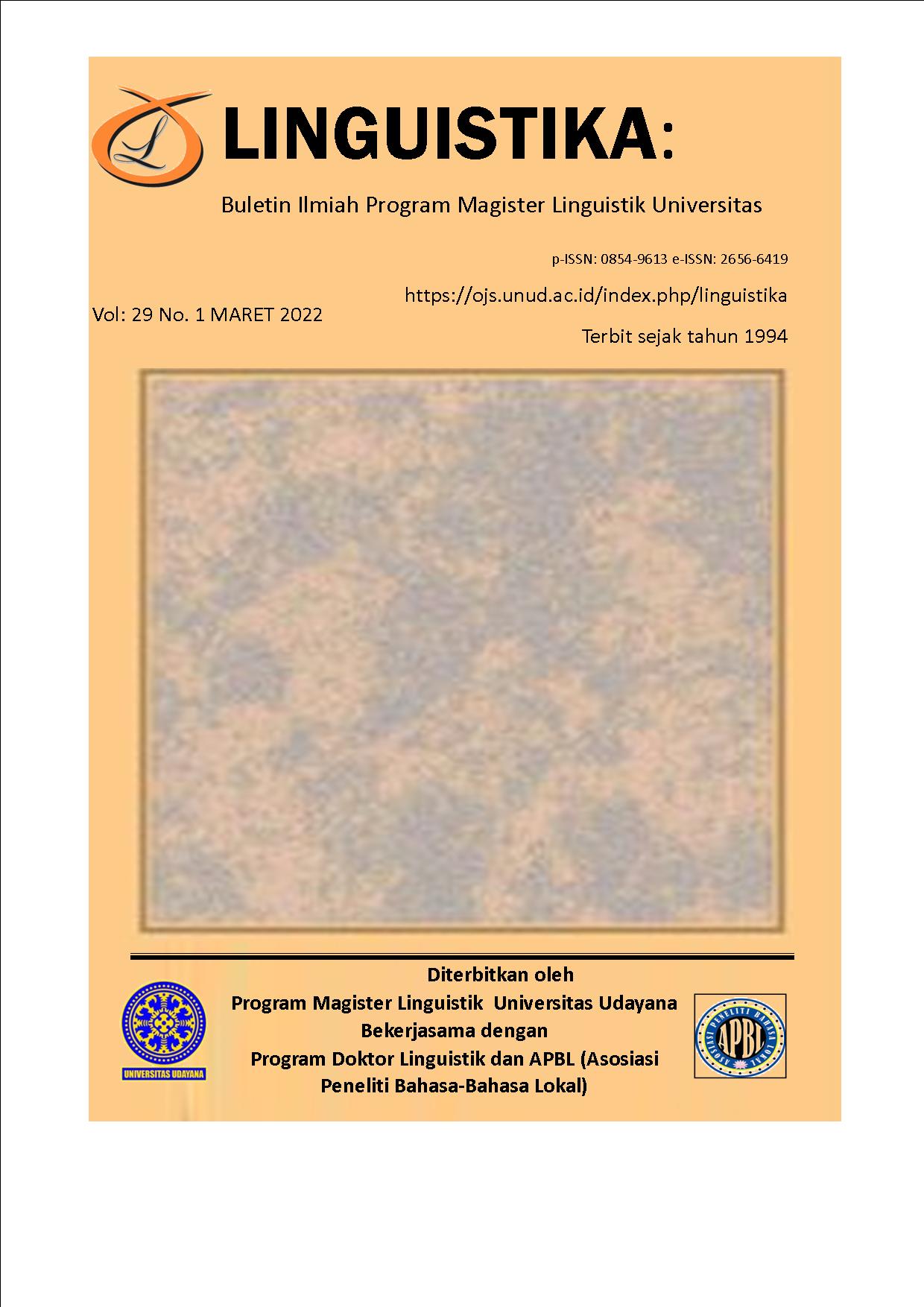Modality in the Novel of The Lord of The Rings and its Translations in Indonesian Language
Abstract
Abstract--This study aims to identify the meanings and techniques used in translating the modality from SL (English) to TL (Bahasa) in the novel of The Lord of The Rings by J. R. R. Tolkien. The data in this study were taken from the original novel of The Lord of The Rings by J. R. R. Tolkien in English version and its translation in Indonesian language. The theories applied to analyse the data are the types of modality proposed by Kreidler (1998) and the translation procedures proposed by Newmark (1988). The data in this study were analyzed using qualitative descriptive approach to find out the result of the problems. The observation method was chosen to apply in this study by reading the SL and TL novel carefully to get the general idea of the content of the story and then observing closely the data consist of modality. The data in this study were presented descriptively used informal method. It meant the data would be presented by giving some descriptions to convey the meanings and translations of the modality. The results are the modality expressed some meanings and used some translation procedures. Modal must expressed unavoidable obligation and strong advice or orders to oneself, it used modulation procedure. Modal should expressed criticism and giving an opinion about something, it used reduction and couplets procedure. Modal have to expressed idea of obligation and used modulation procedure. Modal ought to expressed desirability and used modulation procedure. Modal can expressed ability and giving permission, it used modulation and shift procedure. Modal could expressed ability and used reduction and expansion procedure. Modal may expressed permission and used couplets procedure. Modal might expressed permission and possibility, it used reduction and literal translation procedure.
Keywords: Auxiliary Verb; Modality; Novel; Translation













